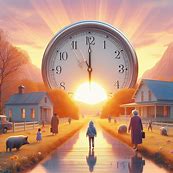Springing Back: How It Works
When daylight saving ends, clocks move back by an hour. Digital timepieces will adjust automatically, but for those with analog clocks, a manual tweak is necessary. If your trusty wall clock currently reads 7 a.m., set it back to 6 a.m. to align with standard time. The process can be a tad confusing for our internal body clocks, but it’s a small price to pay for the benefits that follow.
Which States Participate?
Daylight saving time applies in several states and territories:
- New South Wales (NSW)
- South Australia (SA)
- Australian Capital Territory (ACT)
- Victoria
- Tasmania
Residents in these regions will dutifully set their clocks back an hour this Sunday. However, Queensland, Western Australia, and the Northern Territory do not observe daylight saving, so their clocks remain unchanged. Queensland, in particular, will finally synchronize with the rest of the east coast after spending the past six months running an hour ahead.
The Origins of Daylight Saving
Australia first embraced daylight saving during the tumultuous years of the first and second world wars. The primary motivation was to reduce energy usage. By shifting the clocks forward during summer, Australians could maximize evening sunlight for social activities and exercise after work or school. Additionally, daylight saving helps stabilize energy demand, preventing peak times that strain electricity networks.
Associate Professor Virginie Masson explains, “It spreads the load of networks, rather than having peak times where you could potentially have issues with excess demand for your electricity.” Thus, daylight saving serves both practical and lifestyle purposes.
The Pros and Cons
While daylight saving has its advantages, it’s not universally beloved. Confused cows, disrupted sleep patterns, and the occasional missed appointment are some of the cons. Yet, the majority of Australians still support it, even in states that don’t directly benefit from the extended daylight hours. Perhaps it’s the promise of longer evenings, the chance for a leisurely stroll after dinner, or simply the rhythm of tradition that keeps us resetting our clocks twice a year.
So, as the sun sets earlier and the shadows lengthen, let’s bid farewell to daylight saving for now. Enjoy that extra hour of rest, and remember that time, like the seasons, continues its inexorable march forward. 🌞⏰
